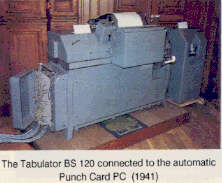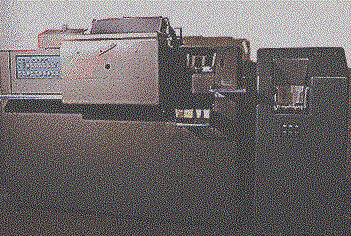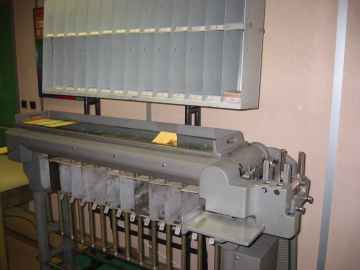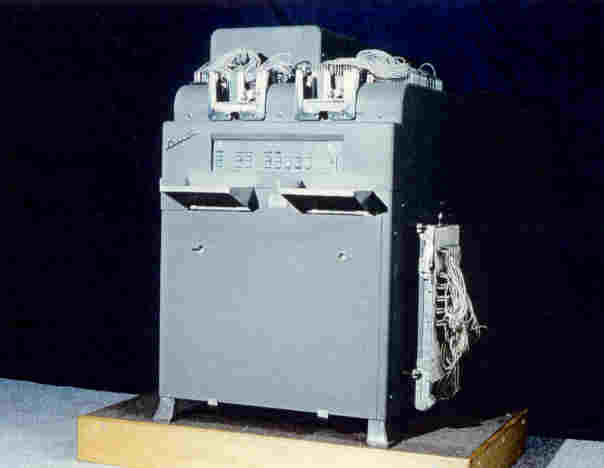
Series 150
This series of punched card machines
represent the workhorse of Compagnie des Machines Bull since the late 1940s
until the early 1960. The name Series 150 was coined in the late 1950s to
differentiate the on going equipment from the faster and more expensive Series
300.
Most Series 150 machines were programmed using a plugwires panel.
TABULATORS
AN7 Printer
AN7 is not a machine but the common
printing element of Series 150. It used 36 characters wheels operating at 150
lpm.
A feature, named "binoquet" [in French] allowed to reinsert zeros
numbers in a numeric fields.
BS Tabulator
The BS Tabulator was nicknamed "Louis XV" for the design of its support. The technology used electromechanical big relays.
It was introduced in 1941

The BS tabulator was able to perform all 4 operations. It used 10 accumulators with 12 wheels.
The alphanumeric printer used the printing wheels technology. Each wheel was engraved with 36 characters. Printer had 92 columns. The speed was 150 lines per minute.
The card equipment associated to the BS printer was reading at 150 cards per minute (integrated reader) and punching at 75 cpm.
BS120 BT PR Tabulator
That tabulator technology used small relays
The BS tabulator was able to perform all 4 operations. It used 10 accumulators with 12 wheels.

Performances were the same as BS Tabulators (150 cpm reading, 150 lpm printing, 75 cpm punching)
A low-cost TAS version was announced in 1960
Calculators
Sorting Devices
D1 sorter
That model of electromechanical card sorter was introduced in 1950.
Speed was up to 700 cards per minutes
D3 sorter
That model was introduced in 1955

Speed was 700 or 1000 cpm
The sorter has 14 stacker positions.
CS100 sorter
It used a solid state (transistors) technology that allowed a flexible selection of sorting fields
Speed was 550 cpm
E12 sorter

Interclasseuse model B
That machine was a collator containing two reader mechanisms and a stacker. Speed was variable from 250 to 500 cpm. It had 17 independent comparators.
Punching Devices
PRD
Functions of that machine were named in its acronym. It was punching, reproducing and duplicating punched cards. PRD was used connected to a Gamma 3 electronic computer, to a photo-reader (marks) or autonomously
It included a card reader mechanism with two feeding mechanisms, a relay memory of 960 items and a punch mechanism.
Speed was 120 cpm

ULP
That machine was named for Unité de Lecture et de Perforation (Reader/Punch unit) and includes features of a calculator. It was introduced around the early 1950s and might be used in place of the PRD.
Trad 80 columns
That TRAD [ cf. traductrice from French] was able to print the contents of on the top of a card. It was composed of a card reader mechanism and a wheel printer. The speed was 60 cpm.